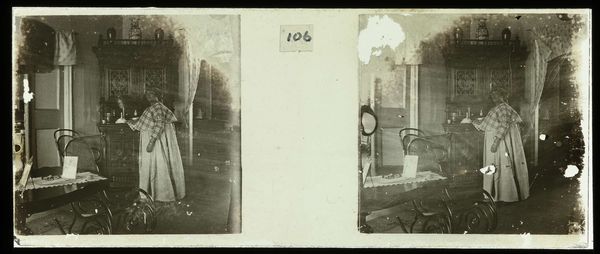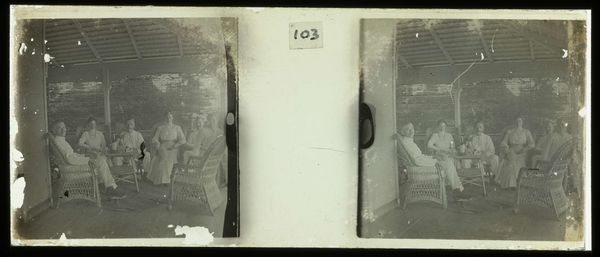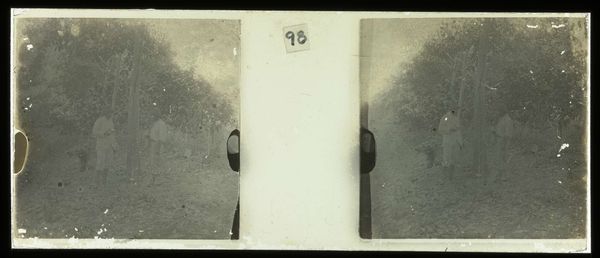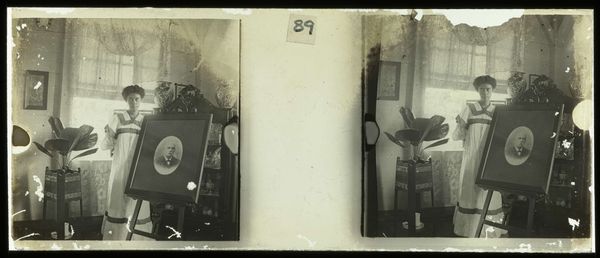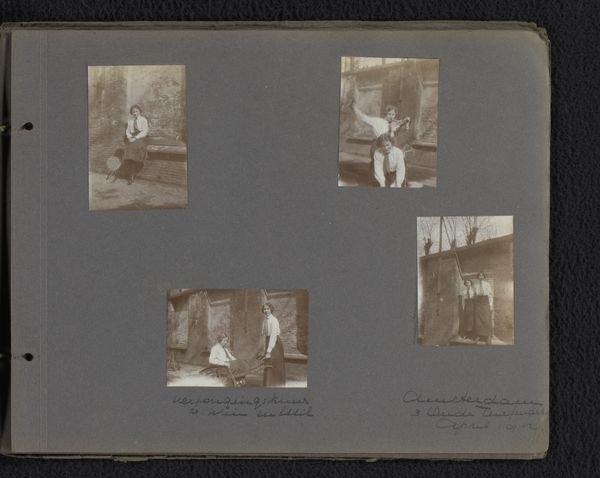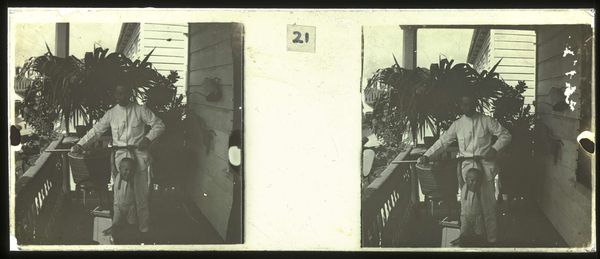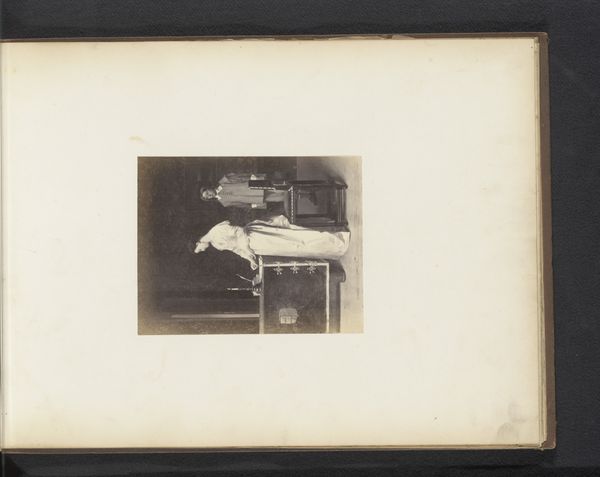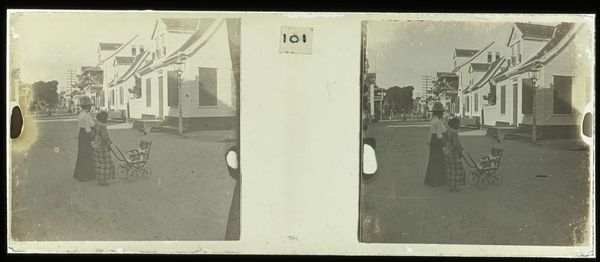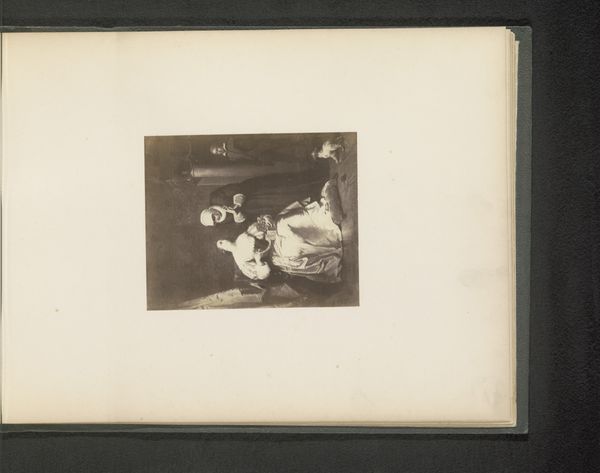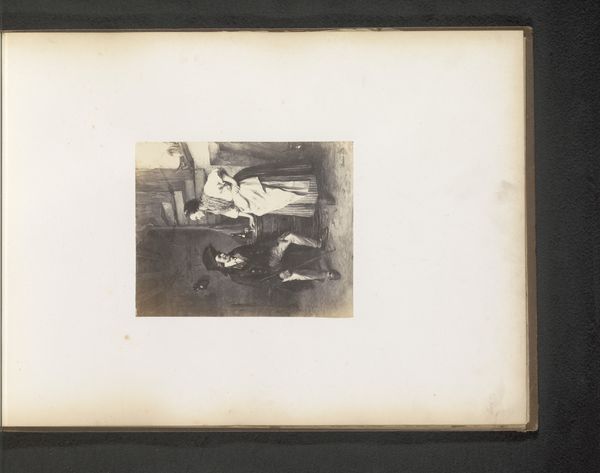
photography, gelatin-silver-print
#
portrait
#
photography
#
gelatin-silver-print
#
genre-painting
#
realism
Dimensions: height 4.5 cm, width 10.5 cm
Copyright: Rijks Museum: Open Domain
Editor: This is "Plantage Accaribo," a gelatin-silver print photograph by Theodoor Brouwers, dating sometime between 1913 and 1930. There's a child bathing, but the image is quite stark. What story do you think this piece is trying to tell? Curator: The historical context is critical here. Brouwers worked in Suriname, and images like these circulated within a specific colonial framework. The child's depiction needs to be understood in relation to the power dynamics inherent in colonial photography. Is it a simple genre scene or something more? Editor: You mean, is it being shown through a biased point of view, because of who made it? Curator: Exactly. Consider the gaze of the photographer. Was it meant for a European audience, perhaps to exoticize or sentimentalize life in the colony? Or was there some other intention, local or personal? This image operates within a system of representation where the power to depict also meant the power to define and, unfortunately, misrepresent. Editor: So, it's not just about seeing a child taking a bath. It's about the power structure when this photo was taken. Curator: Precisely. How were indigenous and local populations portrayed, and by whom? Also, look at the setting. Is it meant to depict a harsh reality, or an idealized scene? Even the "realism" in the artwork must be interrogated for whose reality it is reinforcing, and for whom was it originally created. The image gains complexity once the socio-historical elements are examined, don't you agree? Editor: Absolutely. I originally thought it was a simple portrait, but now I see how much deeper it goes. Thanks for your thoughts on the societal framing in that era! Curator: My pleasure. This type of exploration is precisely what makes examining art through a historical lens worthwhile.
Comments
No comments
Be the first to comment and join the conversation on the ultimate creative platform.
